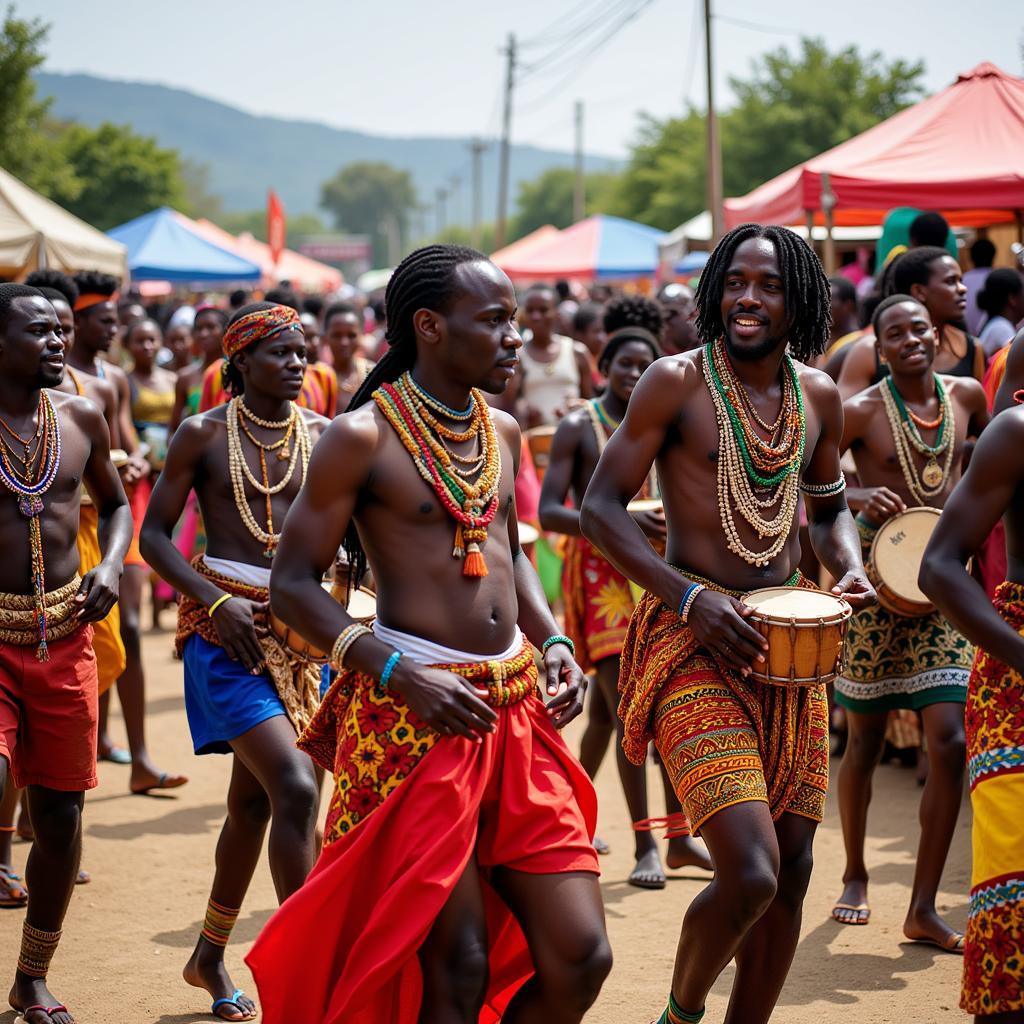Exploring African American Culture in the 1920s
The 1920s marked a period of significant transformation for African American culture, a period often referred to as the Harlem Renaissance. This era, brimming with creativity and social change, witnessed a flourishing of literature, music, art, and intellectual thought that redefined African American identity and challenged prevailing racial stereotypes. This exploration of African American Culture 1920s will delve into the various facets of this dynamic period.
The Rise of the New Negro
The “New Negro” movement, a term coined by Alain Locke, embodied the spirit of self-determination and cultural pride that characterized the era. African Americans sought to reclaim their narrative and express their experiences through various artistic mediums. This cultural awakening challenged the pervasive racism and discrimination that continued to plague American society. The movement fostered a sense of community and solidarity amongst African Americans as they collectively strived for social and political equality. African American figures like W.E.B. Du Bois played a crucial role in advocating for civil rights and challenging the status quo.
One of the key aspects of the Harlem Renaissance was the migration of African Americans from the rural South to urban centers in the North, seeking better economic opportunities and escaping the oppressive Jim Crow laws. This migration led to the concentration of African American talent and creativity in cities like New York, particularly Harlem, which became the epicenter of the cultural explosion. You can learn more about the social dynamics of this era at african american society in the 1920s.
A Flourishing of Artistic Expression
Music and Dance in the Jazz Age
The 1920s are often synonymous with the Jazz Age, and African American musicians were at the forefront of this musical revolution. Jazz, with its improvisational style and syncopated rhythms, became a symbol of the era’s energy and liberation. Legendary figures like Louis Armstrong, Duke Ellington, and Bessie Smith captivated audiences with their innovative musical styles, pushing the boundaries of traditional music and paving the way for future generations of musicians. The vibrant music scene also fostered new dance forms, like the Charleston, which became a cultural phenomenon.
Literature and Poetry: Giving Voice to a Generation
The Harlem Renaissance witnessed an unprecedented outpouring of literary and poetic works that explored themes of identity, race, and social injustice. Writers like Langston Hughes, Zora Neale Hurston, and Countee Cullen gave voice to the African American experience with their powerful and evocative prose and poetry. Their works challenged prevailing stereotypes and offered nuanced portrayals of African American life, paving the way for future generations of black writers. For a broader perspective on African American art across different periods, see african american art movements.
“The Harlem Renaissance was more than just a moment in time,” notes Dr. Anika Johnson, a historian specializing in African American Studies. “It was a cultural earthquake that shifted the landscape of American art and literature forever.”
Visual Arts: Capturing the Spirit of the Times
Visual artists also played a significant role in shaping the cultural landscape of the 1920s. Painters and sculptors like Aaron Douglas and Augusta Savage created works that celebrated African American heritage and explored themes of identity, struggle, and resilience. Their art captured the spirit of the times and provided a visual representation of the New Negro movement. You might also find information on the later period of african american art 1930s insightful.
 Visual Arts of the Harlem Renaissance
Visual Arts of the Harlem Renaissance
The Legacy of the Harlem Renaissance
The Harlem Renaissance, although geographically centered in Harlem, had a profound impact on African American culture across the United States. It laid the foundation for the Civil Rights Movement and continues to inspire artists and activists today. The era’s emphasis on self-determination, cultural pride, and artistic expression remains a testament to the power of creativity and resilience in the face of adversity. More on the influence of african american figures can provide further context.
“The legacy of the Harlem Renaissance is not just about the past,” states Professor Kwame Asante, a leading scholar of African Diaspora Studies. “It’s about the ongoing struggle for social justice and the enduring power of art to inspire change.” The african american culture 1920s continues to resonate with us today.
Conclusion
The african american culture 1920s, embodied by the Harlem Renaissance, was a pivotal period in American history. This era of artistic and intellectual flourishing fundamentally reshaped African American identity and left an enduring legacy that continues to inspire and influence us today.
FAQ
- What was the Harlem Renaissance?
- Who were some key figures of the Harlem Renaissance?
- What were the main themes explored in Harlem Renaissance art and literature?
- How did the Harlem Renaissance impact the Civil Rights Movement?
- What is the lasting legacy of the Harlem Renaissance?
- What were the main contributing factors to the Harlem Renaissance?
- How did the Great Migration influence the Harlem Renaissance?
When you need support, please contact us via Phone: +255768904061, Email: kaka.mag@gmail.com Or visit us at: Mbarali DC Mawindi, Kangaga, Tanzania. We have a 24/7 customer service team.

